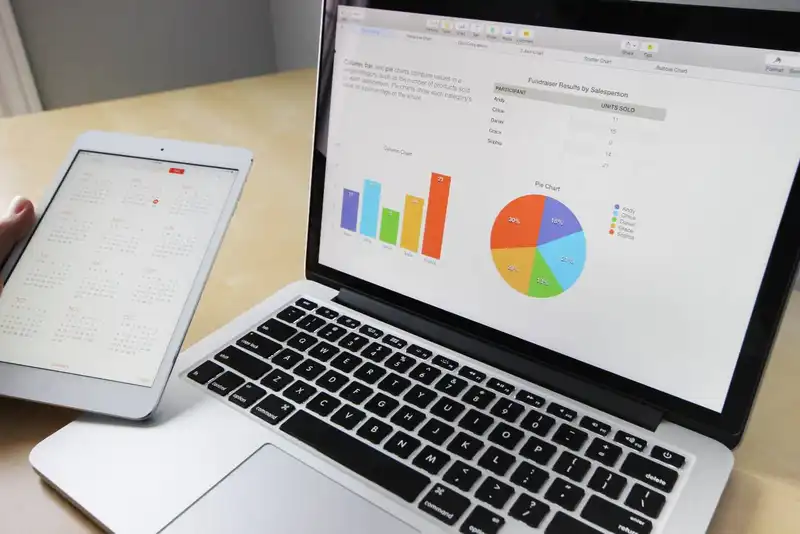Predictive Sales Analytics- What Is It & What Are the Benefits?
Implementing a data-driven approach to decision-making has been proven to increase the profitability of businesses regardless of the industry. In fact, business intelligence surveys show that organizations utilizing big data have experienced an 8-10% increase in profits and a 10% decrease in operational expenses simultaneously.
However, with only 57% of companies reportedly utilizing data in their decision-making processes, despite 91% acknowledging data to be vital to business growth, fostering an analytics-focused environment can pose a great opportunity for companies to remain competitive.
While there are endless uses for internal and external data, there are 4 main uses for sales analytics. Implementing these techniques can help to enhance sales forecasts, optimize resource distribution, and lead to higher conversion rates.
Predictive vs. Prescriptive Sales Analytics - What's the Difference?
Most businesses are already aware of the benefits they can gain from big data and operational data analytics. However, to fully implement sales analytics and data-driven decision making, businesses must note the differences between predictive and prescriptive analytics.
Understanding which reports fall under which category and the objectives of the two approaches will help to solidify an organization's analytics strategies.
Predictive Sales Analytics

Predictive sales analytics involves making future sales predictions based on the data from past sales and inventory. Through system and data integration, businesses can gather all relevant information, standardize the data, and interpret the findings automatically.
By using historical data from previous years, quarters, or even months, businesses are able to identify patterns in sales, consumer behavior, and expenses. Using predictive sales analytics is a helpful and valuable tool for gaining a better understanding of the organization's financial health for the months or years to come.
Predictive sales analytics is also an extremely valuable tool used to inform various departments on where they should be directing their resources, whether it's budget allocation or inventory replenishment. For example, if leads are taking too long to convert, predictive sales analytics can inform the sales department to focus their efforts on leads that convert quicker.
Prescriptive Sales Analytics

While having predictive analytics information is helpful in projecting future financial outcomes within a business, it is only a small step in becoming a data-driven organization. Prescriptive sales analytics combines historical context with forecasts to create actionable insights. Prescriptive analytics digs deeper into the potential outcomes of each business decision as well as their impact on finances.
Due to its complex nature, prescriptive sales analytics is still a few years off from being adopted in the mainstream business scene. However, effective prescriptive analytics has the ability to increase profits through optimization and reduce risk.
For example, in the sales management sphere, businesses can access the following information through prescriptive analytics-
- Which opportunities have higher potential, and therefore should be prioritized
- Which sales processes are the most effective
- Which sales representative is most likely to meet their quota
4 Things Businesses Can Gain From Predictive Sales Analytics

Today, predictive sales analytics is widely used by businesses of all industries, from foodservice and retail to healthcare and government services to optimally allocate their resources while appropriately meeting the expected demand.
Furthermore, with the development of sophisticated software tools, businesses can automate this forecasting process to make this optimization technique even easier. By implementing predictive analytics into daily operations, businesses can also gain the following core benefits.
1. Higher Accuracy of Sales Forecasts
A comprehensive sales forecast considers the effect of past performance, as well as industry trends and economic shifts to project expended sales. Generally speaking, sales forecasts tend to have accuracy rates between 60-70% but can be improved to over 80% with the right tools.
Using predictive sales analytics, businesses can select the most appropriate forecasting model based on their situation and objectives. Depending on the business' location or industry, seasonal sales trends and customer shopping habits may be affected by different factors.
Using forecasting software, businesses can consider competitor information, historical sales, and other vital data to increase the accuracy of projected sales.
2. Predict the Likelihood to Buy & Increase Conversion Rates
Using predictive sales analytics along with consumer data and historical sales information, businesses can accurately predict the likelihood of potential customers turning into one-time or returning consumers. By analyzing the demographics, location, and pre-purchase behaviors among these groups, companies can begin to identify which prospects are behaving like their existing buyers.
After categorizing and tagging prospects based on their likelihood of becoming customers, businesses can customize the way their marketing and sale team members interact with the public.

3. Targeted & Customized Discounts
There's perhaps no better incentive to get someone to buy a product than by offering them a discount. However, not all discounts work the same. Through predictive sales analysis, companies are able to see which discounts have the highest conversion rates by getting customer data pertaining to their regions, demographics, and types of consumers.
Offering universal, blanket discounts can lower profit margins and offer very little ROI on marketing campaigns. With predictive analytics, businesses can create a buyer persona to offer consumers with a greater likelihood to purchase with lower discounts and offer less likely consumers with higher discounts.
4. Optimal Pricing
Predictive sales analytics can also gather competitor data and examine market conditions to help businesses determine the most optimal pricing and discount levels. Using this information, businesses can apply the appropriate pricing shifts to improve their profitability and likelihood of lead conversions.
Furthermore, organizations can pinpoint hidden costs within their operations and discover new profitable opportunities, such as market penetration. By understanding where the market is headed, companies can observe whether their current pricing strategies will remain competitive. This can maximize the effectiveness of upsells and improve customer retention and satisfaction.





